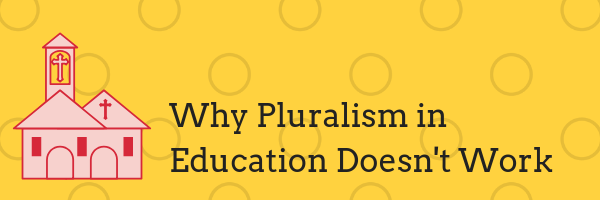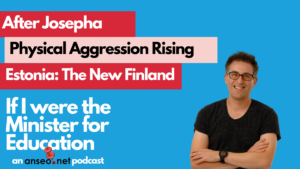I was listening to a debate on the radio about the Angelus last week. The argument comes up every so often in the media and usually goes along the lines of somebody suggesting RTE should get rid of it from TV and lots of people spending their money texting about why it shouldn’t. RTE have decided, in some effort to be more inclusive to other religions, to make the imagery more multicultural. I’m struggling to think of the logic of playing a Catholic call to prayer on the airwaves while simultaneously trying to be inclusive to everyone.
During the debate, the main arguments that seemed to come up were that if RTE were going to play the Angelus, they should also play calls to prayer for other religions. The other argument was that the Angelus is part of Irish culture and should remain in place, (usually followed by the general xenophobia of telling people to go back to their own country if they don’t like “our” rules.)
From my point of view, I don’t particularly have a problem with RTE playing the Angelus. The reason for this is because I have the choice to switch to one of the hundred or so other channels that exist or to not watch the television at that time at all. The Angelus doesn’t particularly offend me as it doesn’t affect me as it is not forced upon me. The notion of having a version of the Angelus for every religion on RTE is ridiculous as the television wouldn’t stop ringing different types of bells trying to keep every culture or faith included.
It’s almost the same story with our education system. It is impossible to create an education system that provides faith formation or religious instruction for every belief system, yet this is exactly what the current policy of the Irish government is trying to do. Theoretically, the government want to give a choice to all parents to send their children to schools that offer faith formation in their chosen belief system as well as a school that offers no faith formation or one that provides faith formation for part of the school year. If one looks at a typical set up that “provides” this choice, you might have a town with several Catholic schools, a Church of Ireland school, an Educate Together school and a Community National School.
Let’s say there are exactly the same number of children in the town to fit in the particular models. Therefore, you will have Catholic schools full of Catholic children, a CoI school full of CoI children and the rest of the children will have to decide between the Educate Together or Community National School. It is clear that a system like this segregates children by faith, which doesn’t lead to a pluralistic society, because the children in the faith-based schools never get to meet, socialise or learn about their counterparts because they are not in the same school as them. Clearly this is a problem for pluralism in education and goes against its aims.
While one can switch a TV off or change channels when the Angelus is on, the same can’t be said for going to primary schools in Ireland. For example, while in reality, one can homeschool their children, this isn’t really an option for working families and isn’t really fair to force on someone. How about changing the channel and going to an alternative model of education? When the only channels available to you are mainly Catholic (94% of schools), the choice isn’t always there, and even if it is, they are hugely oversubscribed.
The obvious thing to do is create an education system that doesn’t require choice: a one-size-fits-all model. The government seemed to believe the Community National School model is the solution to this uniquely Irish problem.
(Note that the Community National School changed their policy in 2018 to no longer segregate pupils during the school day so the following is simply here to illustrate what the government wanted to do.)
In theory, it pleases everyone. If you are Catholic, you can still get your faith formation during the school day. If you aren’t Catholic, you can still come to this school without being discriminated against. The minister for Education, Jan O’Sullivan, believes that the Community National School (CNS) model is the way to go and plans seem to be afoot to roll this model of education out across the country. Her theory is while single denominational schools can only really provide a fully inclusive day for one faith and interdenominational schools can provide for two, the government claims that Community National Schools can provide for all faiths and none.
The CNS model seems to work in the following way. Children are enrolled based on locality and age and no one can be discriminated against by religious beliefs of parents. During the day, there is 30 minutes provided for the CNS curriculum, which is called Goodness Me, Goodness You. At the end of each lesson, children are told… if you believe in one god, here is a prayer to say and if you believe in 2 or more gods or none, here is a reflection you can think about. For some reason, nobody is wreaking havoc about this blatant segregation of children based on their parents’ religious beliefs. To make matters worse, for part of the school year, (I have heard it is anything between 4 and 8 weeks), children are physically segregated for sacramental preparation during this time so the Catholics can do their communion and confirmation practices while the other faiths (unless they have a qualified teacher to teach provide them with some form of faith formation) hang in a different classroom doing something else. (There are no other rites of passage being taught in any CNS as there are no teachers from other faith backgrounds, as far as I am aware.) Again, nobody is kicking up a fuss here.
To add to this, the Catholic Church in 2004, according to this article, “laid down as a minimum non-negotiable tenet that Catholic children should receive religious education and faith preparation for Communion and Confirmation within the school working day, and be separated for this from the rest of the pupils.”
Theoretically, a CNS may have a classroom with 30 children, 29 of which could be Catholic and 1 might have no religion. For up to 8 weeks of the year, the Catholics would get their faith formation and the one child would be left on their own doing something else. Interestingly though, if there were 29 children with lots of different faith backgrounds and 1 child who was Catholic, the 1 Catholic child would receive sacrament preparation and the rest of the class would receive nothing.
It’s no surprise really that the Irish solution to this Irish problem doesn’t work because children become segregated based on their parents’ belief systems. (Again, note CNS no longer use this model, see above)
How about a school that does not discriminate at all on the basis of faith? How about a school where children are never segregated at any time during the school day whatever their belief system? How about a school where any faith formation happens outside of the school day in the communities they are serving? Interestingly, the actual answer to these questions already exists. While I don’t want to sound like an advertisement for Educate Together, they are the only patron body that can claim that in 100% of their schools there is never a point in the school day where a child will be left out based on the beliefs of themselves or their families. The children learn about and discuss many different faiths and none, and no one is told whether they are correct and certainly nobody is removed from the class at any time because of this.
Pluralism in Education Patronage can’t work. It creates segregation according to faith. The answer isn’t to lower the percentages in favour of lots of different faith patronages. Even in countries like the UK, where there is a minority of faith schools, these schools have not only created segregation according to faith but also to economic class systems. The answer isn’t even to create schools where segregation happens during the school day. Right now, Educate Together are the main providers of a system which does none of these things. However, even if the government did not agree with all the tenets of Educate Together, they would do very well to create a model of education that ensures the same access to education for everyone.




4 thoughts on “Why Pluralism in Education Doesn’t Work”
you have only 1 public service TV station that plays the Angelus before the main evening news
That’s my point, Steve
no there are not 100s of other public service stations there’s only 1 and it plays the Angelus before the main evening news
If you have a TV, you have a minimum of 8 channels to watch. You also have an option not to watch the TV for one minute too.
Comments are closed.